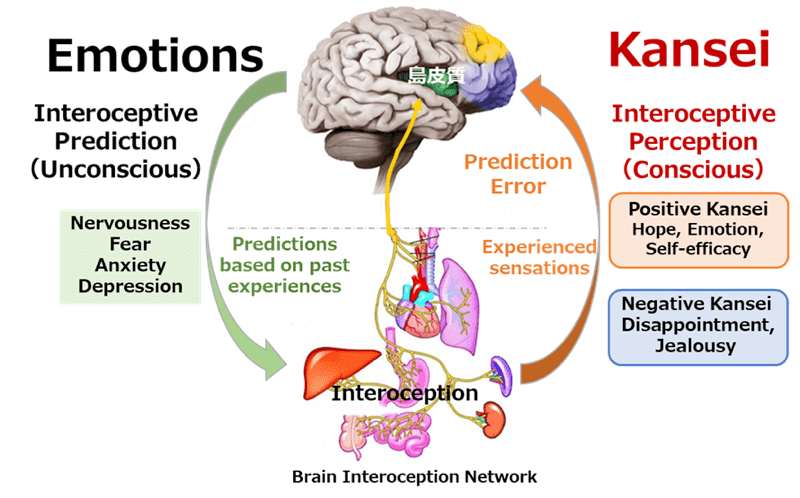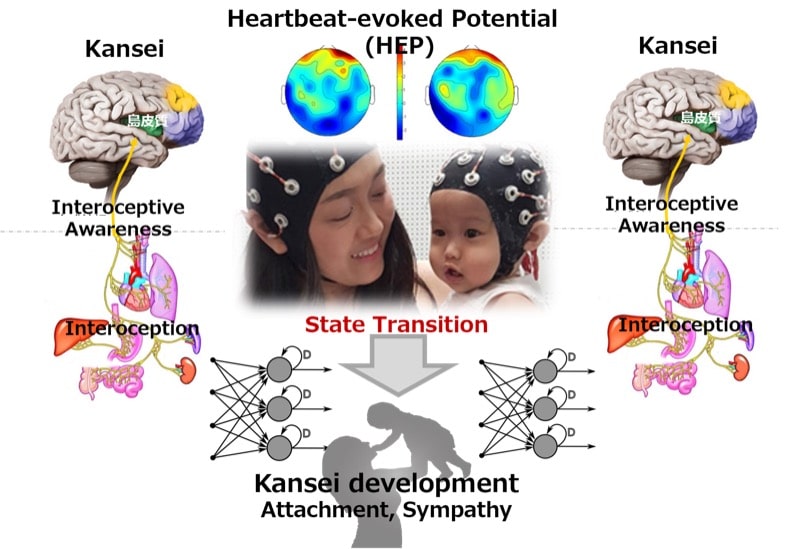Progress Report
Innovation in “Mental Capital” through Awareness Music and creation of new liberal arts1. Promotion of research innovation by fusion of music and brain
Research Progress in Year 2022
1. Summary
In this project, we will investigate the relationship between interoception (visceral sensations) and the brain, clarify and visualize the brain mechanisms of KANSEI, and use music as a tool that affects KANSEI beyond the oral language barrier. We aim to realize a society in which the next generation can play an active role in a rich and fulfilling way by making people aware of their unconscious positive sensibilities and increasing their “psychological capital” such as hope, efficacy, resilience, and optimism.

Our aim is to create innovation through the fusion of different fields, music and KANSEI neuroscience, and reduce their gap. In this R&D project, we will translate the artistic KANSEI (non-verbal experience) of musicians into the language of scientists, demonstrate the effects of music on KANSEI through neuroscience, and finding solutions to possible challenges in this project will help to foster innovation and technologies.
2. Expected Results for Year 2022
Humans live by anticipating future events. The brain forms memories of interoceptive changes from past episodes. Seth & Friston (2016) suggest that emotions arise when the brain infers the meaning of interoceptive changes based on past experiences. In 2022, we published a paper on interoceptive control by the insular cortex, which is the basis for elucidating the brain mechanisms of KANSEI (Fermin, Friston & Yamawaki; 2022).
In order to investigate how the brain processes interoceptive sensations when listening to music, we developed a music/KANSEI app that incorporates questionnaires such as awareness of interoceptive sensations related to KANSEI, stress, and resilience, and measures of heart rate and brain waves with wearable devices. We built a simultaneous measurement system as follows.

Researchers participate in music workshops to experience emotions elicited by music, perform psychological surveys using emotional apps such as interoceptive awareness of performers and conductors, and use objective emotional evaluation methods. We performed preliminary studies on the responses of heartbeat changes and brain activity during music performances and stimulation to ultrahigh-frequency sounds that cannot be consciously perceived by the human ear. Musicians and neuroscientists discussed the usefulness of KANSEI apps and the issues of biometric measurement.
In addition, for the next Japanese generation (infants) who should play an active role in 2050, we will examine how interoceptive sensations and heartbeat changes modulate the brain heartbeat-evoked potential (HEP) by simultaneous measurement of brain waves and heartbeats, and investigate the roles of music in KANSEI development. Thus, music experiments with adults, infants and technological development to understand KANSEI and mental health underlie the foundation of this project.

3. Future plans
By cooperating with the general public and having infants as participants, we will build a research environment to validate our research results on the neuroscience of KANSEI and its relationship with music.
We will discuss the development of a Music Edutainment program that allows participants to understand the neural and psychological mechanisms of KANSEI while enjoying music, discuss issues for social implementation of KANSEI visualization technology, and examine research strategies that will lead to innovation creation.
We will collaborate with schools and local governments to develop childcare and education systems that use music to nurture children's sensibilities.
Informed consent for KANSEI research targeting children and ELSI for social implementation through industry-academia collaboration will also be extensively examined, and research that will lead to innovation will be promoted.
(YAMAWAKI Shigeto, Hiroshima University)